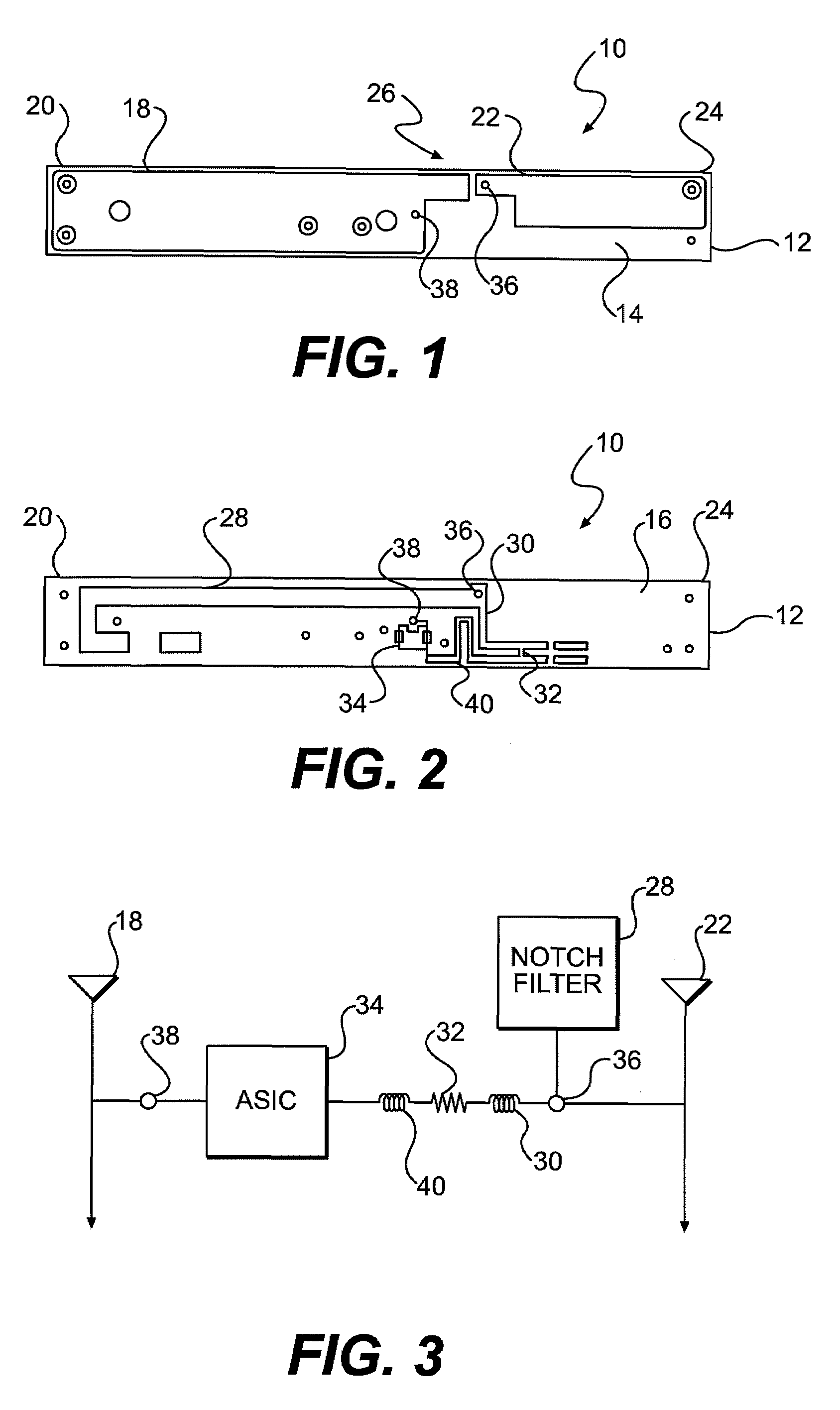Transmission line notch filter
a technology of transponder and notch filter, which is applied in the structural form of radiating elements, waveguide devices, resonance antennas, etc., can solve the problems of damage being known to look like esd, reports of tag failures began to surface, damage was thought to be caused, etc., and achieves no more risk
- Summary
- Abstract
- Description
- Claims
- Application Information
AI Technical Summary
Benefits of technology
Problems solved by technology
Method used
Image
Examples
Embodiment Construction
[0025]The most common transmission line filters use a ¼ wavelength transmission open or short stub that transforms an open circuit to a short or a short circuit to an open, respectively. The transmission line for this invention strays from conventional approaches by using a transmission line length determined such that the filter impedance is very high at the operating frequency range and very low at the stop frequency range in comparison to the operating impedance. Therefore the pass-band and stop-band frequencies determine the transmission line length rather than conventionally used quarter wavelength transmission lines. For example, the preferred transmission line length for the exemplary notch filter disclosed herein is about 3.4 to 3.5 inches instead of the conventional 1.7 inch ¼ wavelength transmission line length for a 915 MHz signal.
[0026]To suppress the 1300 MHz signal, a junction between the antenna and the antenna impedance matching circuit is used to connect the shunt n...
PUM
| Property | Measurement | Unit |
|---|---|---|
| impedance | aaaaa | aaaaa |
| impedance | aaaaa | aaaaa |
| length | aaaaa | aaaaa |
Abstract
Description
Claims
Application Information
 Login to View More
Login to View More - R&D
- Intellectual Property
- Life Sciences
- Materials
- Tech Scout
- Unparalleled Data Quality
- Higher Quality Content
- 60% Fewer Hallucinations
Browse by: Latest US Patents, China's latest patents, Technical Efficacy Thesaurus, Application Domain, Technology Topic, Popular Technical Reports.
© 2025 PatSnap. All rights reserved.Legal|Privacy policy|Modern Slavery Act Transparency Statement|Sitemap|About US| Contact US: help@patsnap.com



